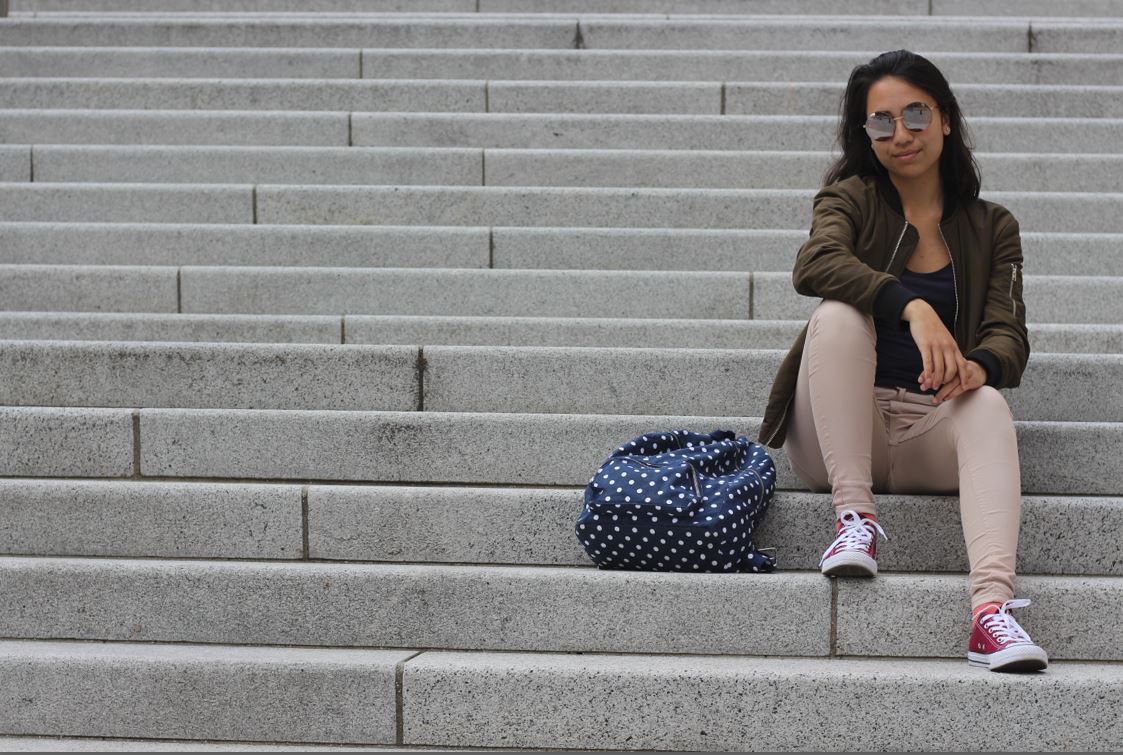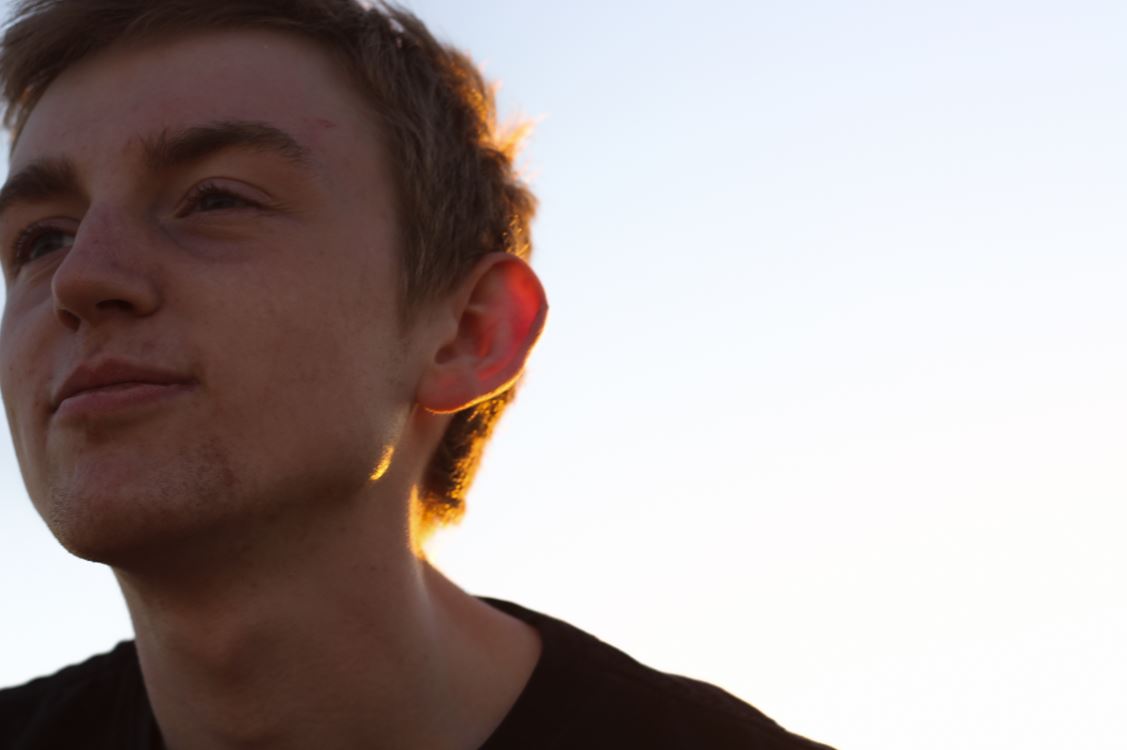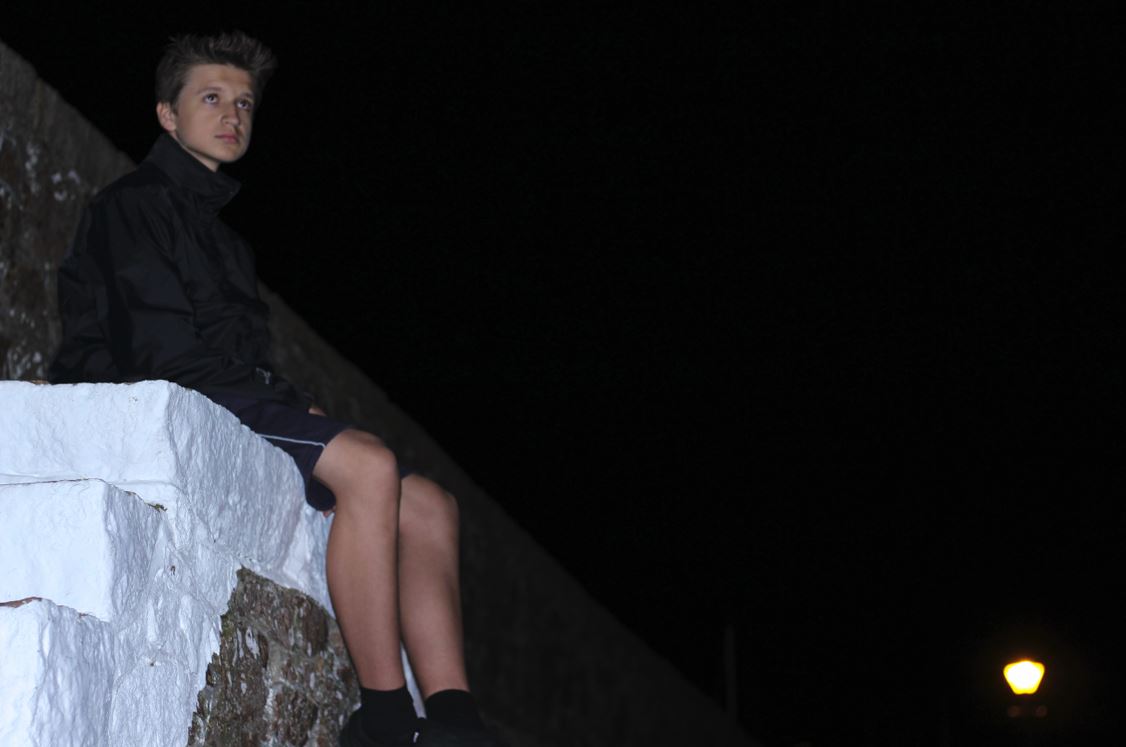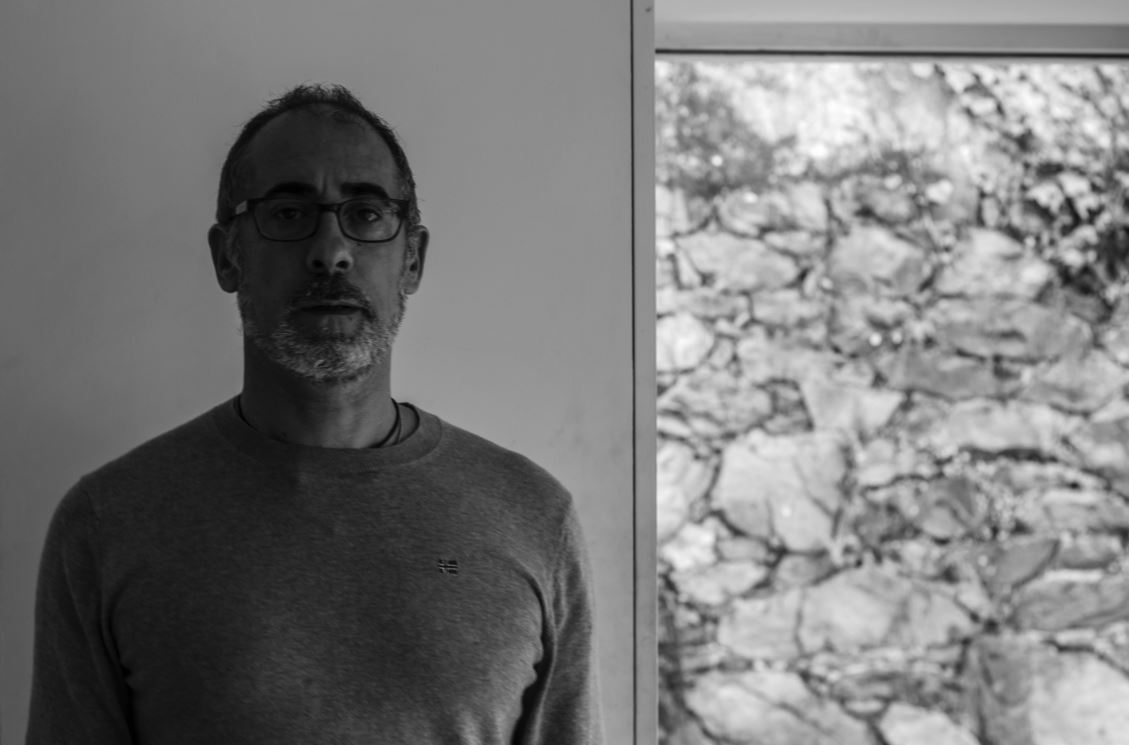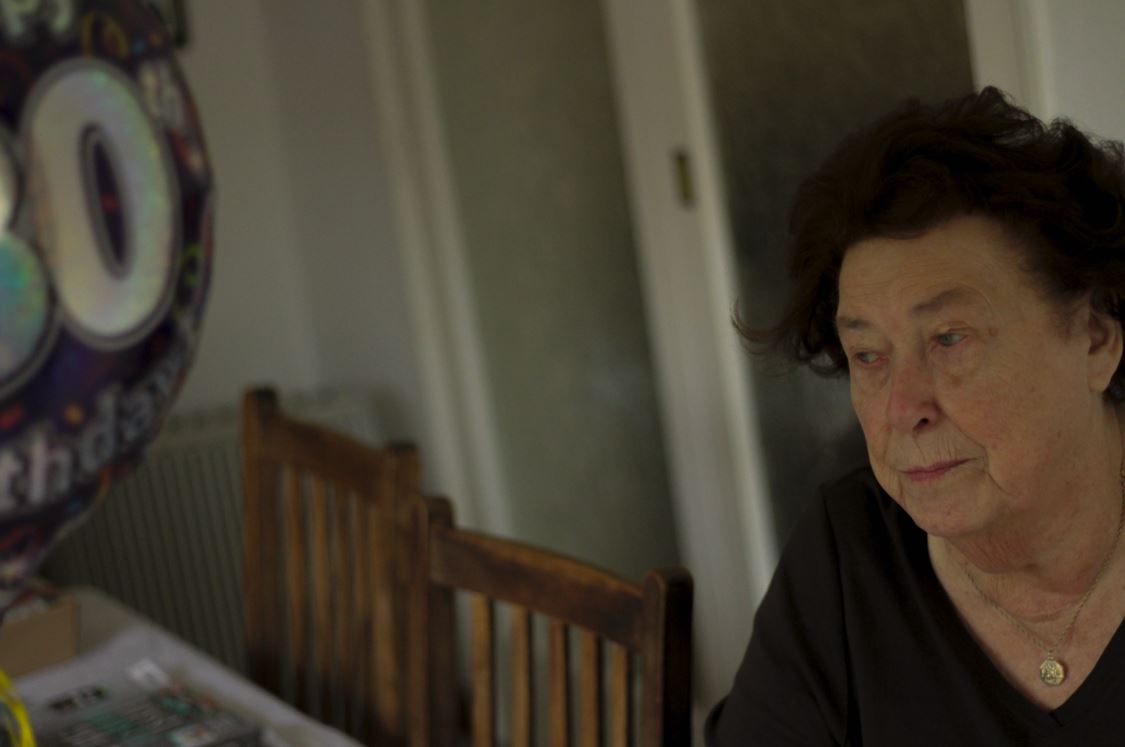Who is Henri Cartier-Bresson? Henri Cartier-Bresson was born in Chanteloup-en-Brie, Seine-et-Marne, France. He was the oldest of five children, with his father being a wealthy textile manufacturer. His mother's family were cotton merchants and landowners from Normandy, where Henri spent part of his childhood. His parents supported him financially so Henri could pursue photography more freely than his contemporaries. Henri took holiday snapshots with a Box Brownie; he later experimented with a 3×4 inch view camera. His father assumed that his son would take up the family business, but Henri also feared this prospect. Returning to France, Cartier-Bresson deepened his relationship with the Surrealists. He became inspired by a 1930 photograph by Hungarian photojournalist Martin Munkacsi showing three naked young African boys, caught in near-silhouette, running into the surf of Lake Tanganyika. Titled Three Boys at Lake Tanganyika, this captured the freedom and grace of their movement and their joy at being alive. That photograph inspired him to stop painting and to take up photography seriously. Some of the work he started to produce consisted of: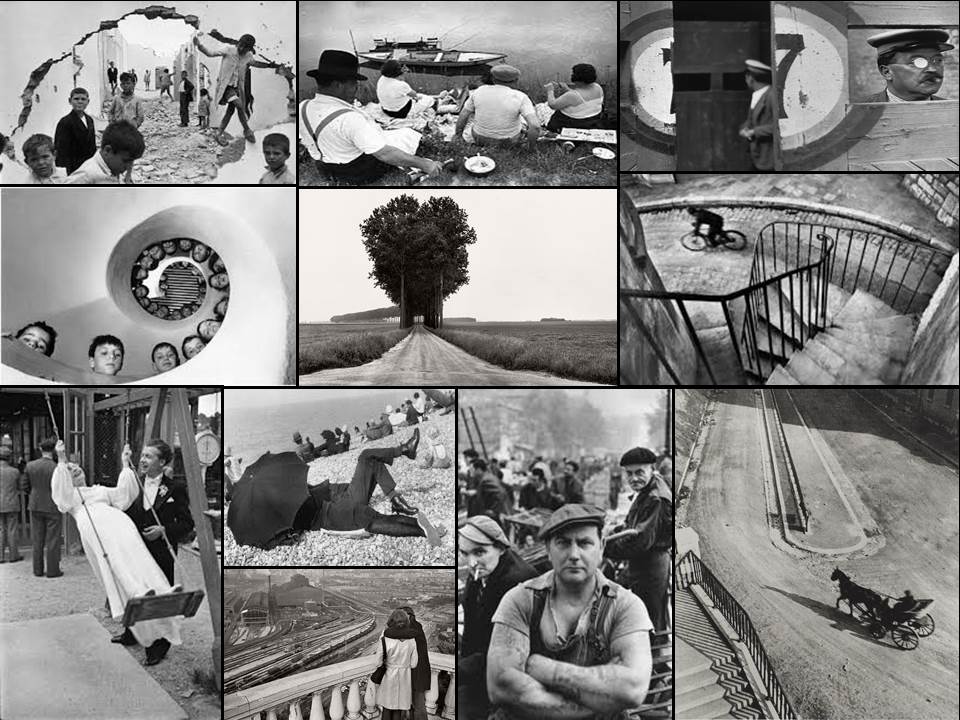
From this selection of a few of his images, I found that my eye was drawn to the picture of the wall crumbled in.
The contrast between the subjects within and the white crumbling wall, which in a way frames the image, allows the photograph to really define the faces of the individual children. From this it allows us to see the different expressions of each child, some seem to be captivated by this photographer taking the picture, whilst others are completely oblivious to it. Allowing the photographer to capture the playfulness but also the curiosity that is seen within each child. The fact that some of the children are playing on rubble, shows how that even in the worst scenarios, kids always make the best out of what they have, showing that innocence within.
Category Archives: AO2 Explore Ideas
Filters
Representation, Standards and Ethics in Photojournalism
The job of photojournalists is to show the world what is happening in a visual form. This can often be controversial subjects such as war or famine. The photojournalist is ethically bound to not change the story as they should show the real picture that the world deserves to see. It can be hard for photojournalists to keep these ethics – especially whilst trying to capture the shot that everybody needs to see.
These photojournalists can often come under fire for their controversial photographs. An example of this is Kevin Carter. Carter took this photograph and it was posted in the New York Times in 1993. There was a lot of reaction from readers but it was not positive. People were saying that Carter was inhumane for taking this photograph and that he should’ve dropped the camera and tried to help the little girl. A year after this was published, Carter killed himself due to the backlash. It later turned out that the supposedly girl was in fact a boy and was being taken care of by the UN food aid station. This shows that cropping and lack of context in an image can completely change what the image is showing, and it can be a powerful tool.
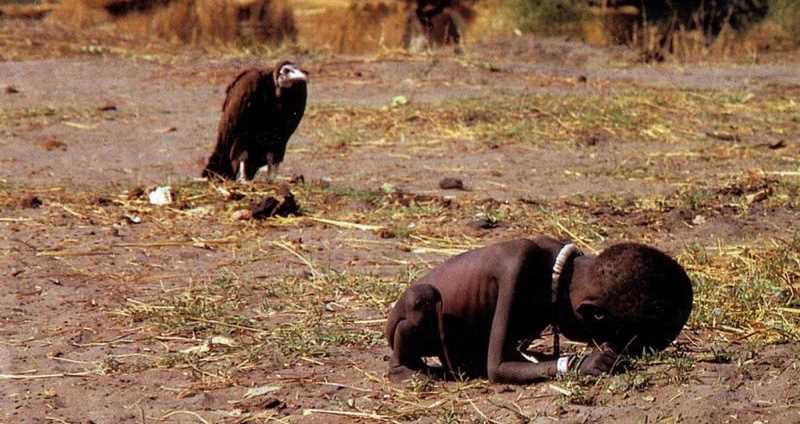
Photo Stories and Stories in a Single Shot
Photo Stories
A visual story is often called a ‘photo essay’ or ‘photo story’. Photo stories allow photographers to narrate a story with a series of photographs. Images are ordered in a specific way with the aim of the viewer seeing them as a story rather than a series of images. Captions are often used with photo essays but it is the images themselves that should be telling the story – the caption is only there to provide some context.

Stories in a Single Shot
It doesn’t have to be a series of photographs that tells a story; stories can be told in one photograph. For example the one below. This photograph was captured in 1968 by Eddie Adams in Vietnam. Adams thought that he was watching the interrogation of a prisoner but to his surprise, as he looked through his viewfinder he saw a pistol being raised to the prisoner’s head. This photograph caught the emotion and action of everyone involved and showed the world what life is like in different places from just one photograph.

Photojournalism
What Is Photojournalism?
Photojournalism is a form of journalism that uses images rather than words in order to tell a story or report some significant news. It is now usually used to refer to still images but in some cases it also refers to the use of videos in broadcast journalism. Photojournalism is distinguished from other close genres of photography such as street photography by using a strict ethical framework which demands that the work is honest and impartial whilst telling the story in strict journalistic terms. Photojournalists must be well informed and knowledgeable about events happening in the world. They deliver news in a creative and entertaining format.
Photojournalists have been around as long as cameras and show the world what they want to and what they should be seeing. An example of this is this photograph by Don McCullin. It shows a shell-shocked soldier in Vietnam in 1968. Due to propaganda everyone back in the US thought that everything was fine for the soldiers and they were enjoying fighting for their country but this picture exploited the fact that soldiers were severely damaged by the things they saw. This is just one case of many in which photojournalists have captured a photograph which cannot be explained with words that’ll give the photo justice.

Comparing Henri Cartier-Bresson and Robert Capa


There are multiple similarities but also multiple differences between Robert Capa (top) and Henri Cartier-Bresson’s (bottom) work. One difference is the amount of contrast that is used in the photos – Capa uses lots of high contrast in his photographs whereas Cartier-Bresson keeps his images almost greyscale. Capa uses the high contrast image to capture the smaller details and emphasise them.
A similarity between the two photographers is that they are both photojournalists – they both photograph the subjects that are unseen by the majority of the population and they shine light on these topics that the world needs to know about.
A difference in the above similarity is that Capa is considered a photojournalist whilst Cartier-Bresson is considered more of a street photographer due to his style of work.
A similarity between the two is that they both worked in black and white. This allowed them to produce photographs in which people focused on the subjects, their emotions and the environment rather than the colour of it. This made their images more dramatic and iconic.
Another similarity between the two is their involvement in Magnum photos. They were both part of the founders of the international photographic cooperative that consisted of the worlds most elite photographers of different genres.
Environmental Portraiture Homework
Arnold Newman


Arnold Newman was born in 1918 and is acknowledged as the pioneer of the environmental portrait, he is also known for his still life and abstract photography. The reason I was intrigued by Newman’s images is because not only does he show people in their natural workplaces like the typical environmental portrait photos, but he also captures images which further communicate a lifestyle choice chosen by the person in the photo in a more in-depth sense than just their workplace. I feel that this approach creates a stronger connection between the person in the photo and the audience because it allows them to feel as if they know the person being photographed. He released many books throughout his life and is an important contributor of portraits to publications such as life and vanity fair.
Photo Analysis

I am inspired by this photo and visually appreciate it due to the simplicity yet great effect it has. The simplicity comes through the use of only three real colours, thus being white, black and grey which strongly contrast each other. This strong contrast helps the viewer identify the key elements to the photo which is the piano and the pianist. This photo comes under the category of environmental portraiture due to the fact that we can understand something about the mans life due to what is shown in the photograph. In this case we know he is a piano player and perhaps lives a simple life due to the way in which the photo has very little detail.
Planning
Task – Take 150-250 formal portrait photos that show an understanding of environmental portraits.
Location – Sporting locations such as football pitch and skate park.
Subjects – My friends with their sporting equipment on in the related location.
Camera settings – 1/250 sec, f/4, ISO 100 (most likely will be adjusted slightly up and downwards)
Props – Model, football boots, football, helmet, bike/skateboard.
Lighting – Natural lighting, artificial for the night shots.
Concept – To photograph images in the style of Arnold Newman
Photoshoot

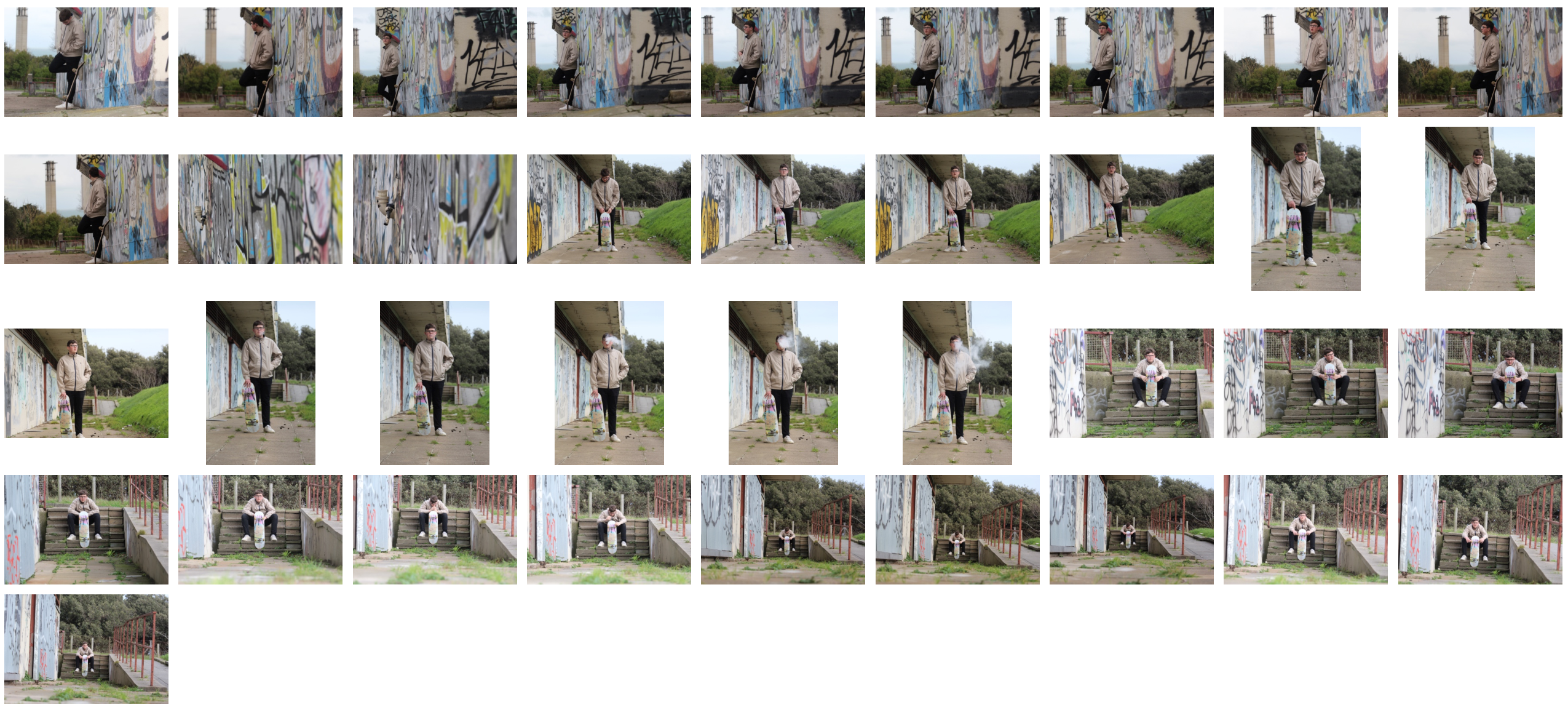
My Response
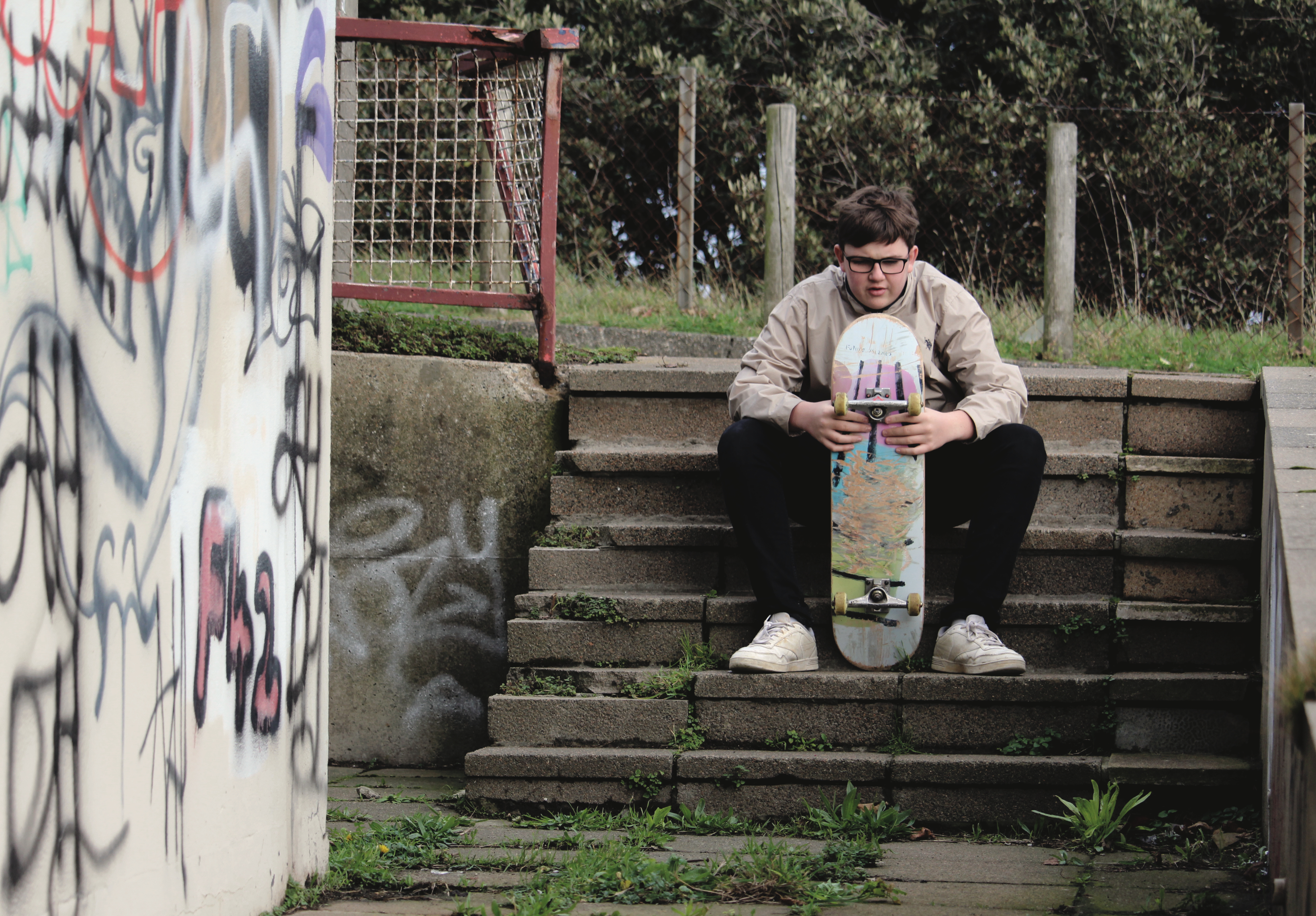

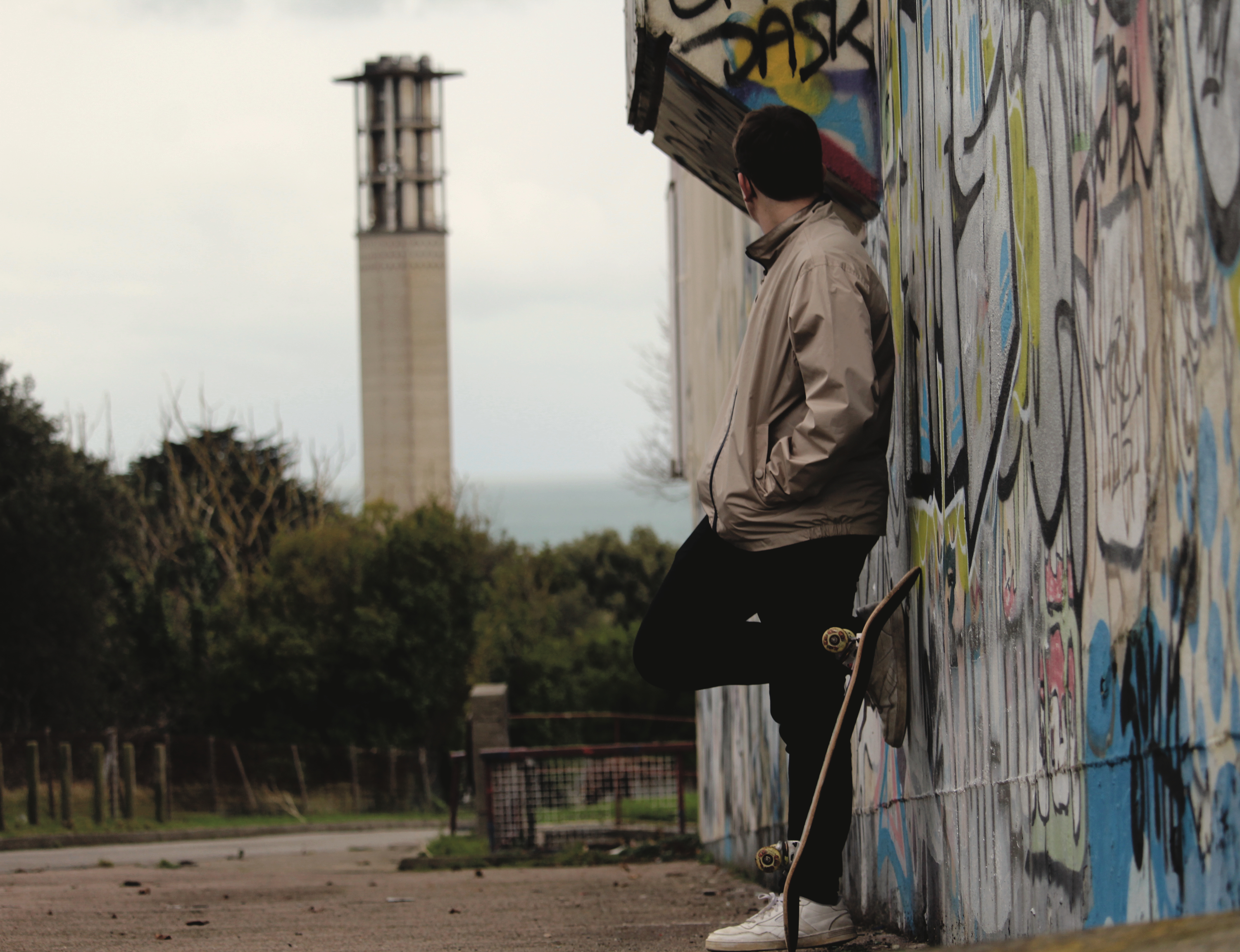

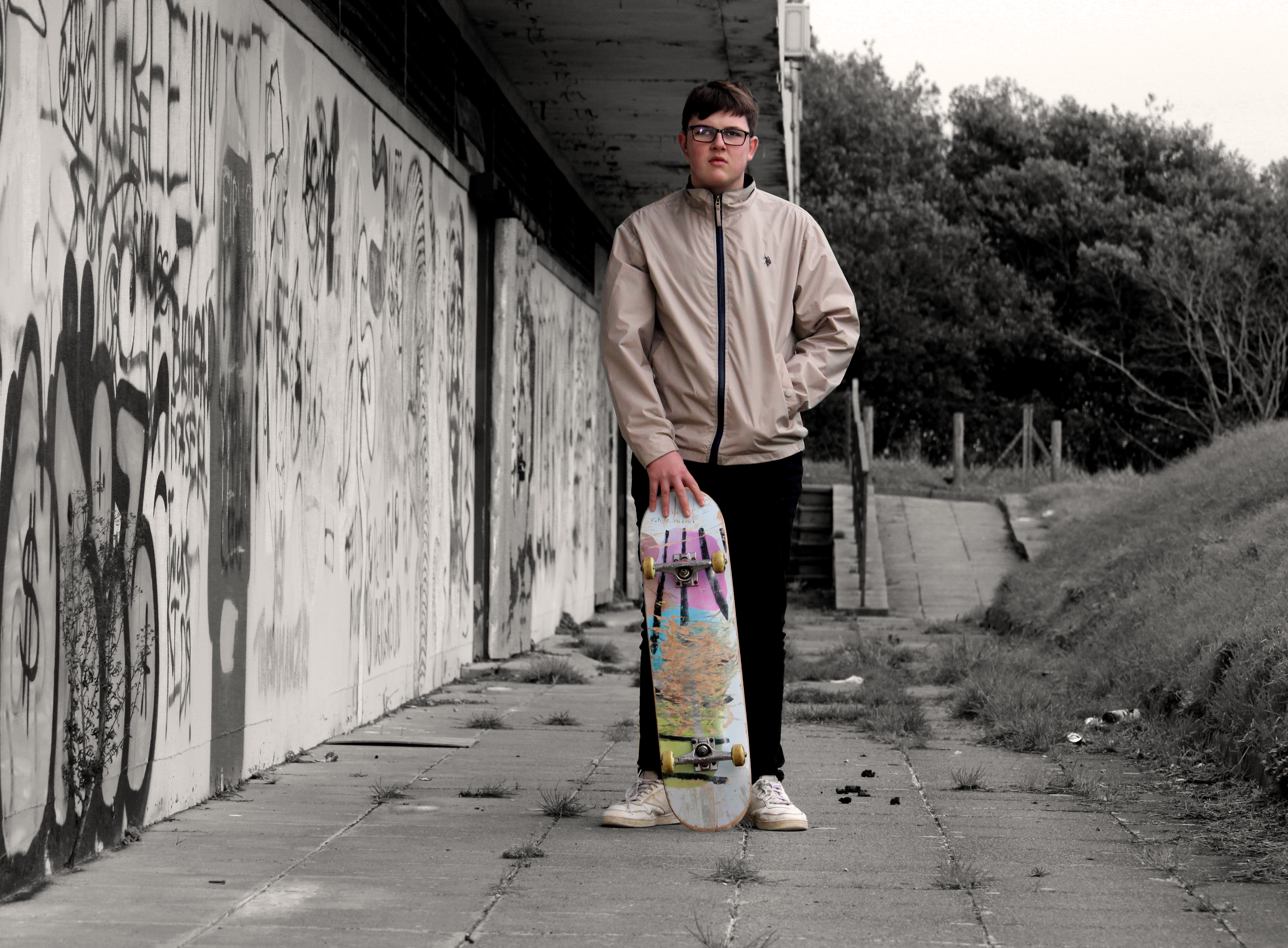
Environmental Portraits
In this shoot I focused on environmental portraits. I wanted to capture the calmness of a person's facial expression, in order to make an impact within the picture itself. When taking the shoot I tried to make sure that the subjects facial expression was expressionless, so that it could make the viewer interpret more about the person's personality themselves. I used a variety of subjects to really explore the different expression of different people, and which ones would impact the most from them all.
Once I had completed the shoot, I decided to try to limit the images down into my top ten photographs, from there it would allow me to decide which picture I found the most effective from the overall shoot. I chose the image that I thought had the biggest impact of all, so took into account the rule of thirds, symmetry and lighting. These were my results:
Once again I then decided to limit my top ten photographs into a top five. From these it would make it easier for me to figure out what I thought was the best image out of the entire shoot, by using software like Adobe Lightroom to edit my pictures and make each one stand out against the rest. These were my final results: I chose this image because I loved how the subject was exactly on the middle line of the road. From this it created a look of symmetry within the picture, and with the trees and paths in the backdrop with the same composition, it to me made the picture aesthetically pleasing. What I also liked about the image was how the blue house in the background, in a way neutralized the image, and to me made it easy to look upon.I chose this picture because I liked the expressionless face of the subject against a white plain backdrop. This to me created effect within, as the backdrop broke up to a messy brick wall on the right hand side, allows for more focus on the subject rather than what is around them, due to how the contrast on their face stands out from the exposed wall.
The reason I chose this image was because I loved the contrast between the overly exposed background and the darkness of the subjects clothes. This creates a dramatic effect, whilst highlighting the points I wished for the viewer to look upon, like the head up. I found that the character being centered slightly to the middle of the picture made it an overall aesthetically pleasing piece.
Finally I chose this image because I found that it captured the calmness and thoughtfulness, of the subjects face at a significant time in their life. This makes the image aesthetically pleasing because of how there is symmetry between the subjects face, and that of the birthday balloon, which cancel each other out making the picture very balanced.
The reason I chose this image was because I really liked the contrast between the darkness of the backdrop of a bush, and the brightly colored outfit of the subject. This instantly draws the viewer's eye to the subject due to the clear definition between her clothes and the bush, whilst making it visually pleasing to the eye as the pattern of the bush behind is broken up.
FINAL IMAGE
I chose this image as my final photograph, because I loved the look of thought upon the subjects face, and found that it told a lot about their past and personality. I found that the balloon and the subject's face being on either side of the image, in a way cancelled each other out, making the overall piece aesthetically pleasing to the eye. The fact that the subject was not centered in the middle of the screen, and made more way to the backdrop behind her, allowed the viewer a bit more of an insight into the life of the subject as a whole. Finally what I thought made the image most effective was that the birthday balloon allows a bit of an view into what the subject may be thinking about in their previous years, and everything they have seen, creating a perspective which is joyful, yet saddens the viewer.
Henri Cartier-Bresson and The Decisive Movement
Henri Cartier-Bresson
Henri Cartier-Bresson (1908-2004) was a French humanist photographer who was considered a master of candid photography. He is considered to be the pioneer of the street photography genre. Cartier-Bresson has widely influenced many photographers throughout the years. His work is primarily black and white street photography and he takes photographs of image with lots of context in them, such as the location/background.
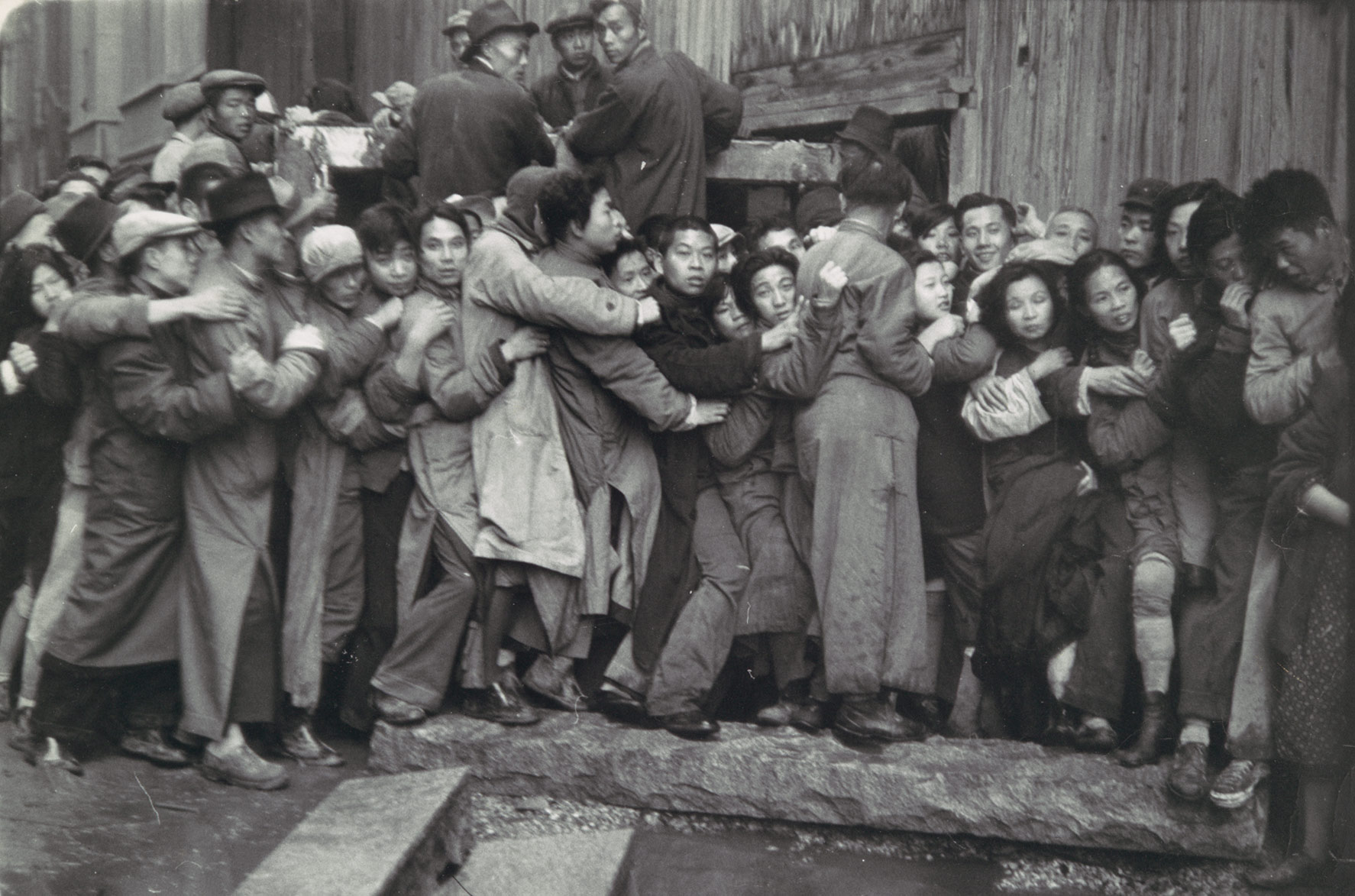



Analysis of Henri Cartier-Besson’s Work

In this photograph it appears that natural daylight has been used to capture it. This has allowed the faces and bodies of the children to contrast with the over-exposed background. It appears that a deep depth of field has been used as all of the image is focused. It also appears that a quick shutter speed of 1/100-1/500 has been used to capture a photograph of the children playing with minimum blur. It appears that a medium ISO of possibly 1600 was used as the image is mostly bright but slightly noisy.
There is no colour in the image as it has a black and white filter over it – this black and white filter helps to create more contrast between the subjects and the background. There is a wide tonal range in this photograph ranging from the dark tone of the faces to the white tone of the environment. There is a dirty and dusty texture to this image and the subjects have dirt on their faces and the material all over the floor is pretty much dust – this helps to further emphasise the children’s life style. There is a slight 3D effect to this image as the subjects are at lots of different distances from the camera, the hole in the wall helps to separate the background and the foreground. There is no pattern or repetition in this image which reflects the environment of the subjects – they cannot predict if their village will be destroyed even further by war. There is no clear organisation of subjects to go along the lines of the rule thirds, this is suitable as there appears to be no organisation in the subject’s lives.
This photograph shows children playing in ruins in Seville, Spain in 1933. Even though the children in the image are quite young, they are unsupervised so it appears that this is quite normal, especially when considering the hard and aged faces of the young children.
It is a very well composed photograph because the curious but aged look on the children’s faces make the viewer wonder what they are thinking about and what they are going through. The photograph shows that in different places in the world, people have completely different lifestyles. It shows the innocence of the children but at the same time the hardship that they go through.
Magnum Agency
Magnum photos agency is an international photographic cooperative owned by its photographer-members. Cartier-Besson says “Magnum is a community of thought, a shared human quality, a curiosity about what is going on in the world, a respect for what is going on and a desire to transcribe it visually”. Henri Cartier-Besson was among one of the photographers that founded Magnum in 1947. Magnum has included photojournalists from across the world who have covered many historical events of the 20th century.
Street Photography


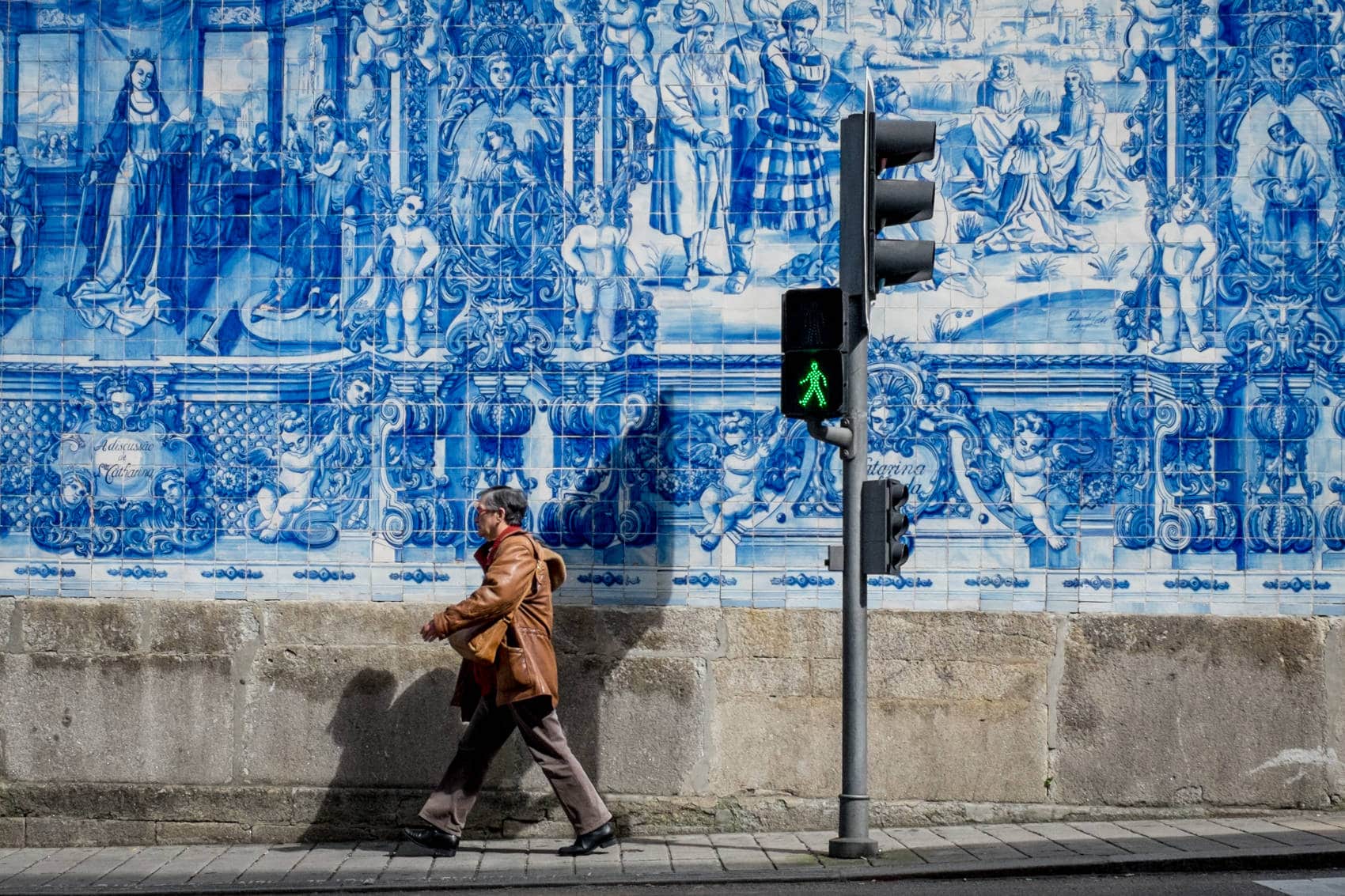


Bruce Gilden

Bruce Gilden is know for his candid close up portraits of people on the streets of New York City and is characterized by his use of flash photography, making him one of the revered street photographers. He has photographed people on the streets of New York, Japan’s yakuza mobsters, homeless people, prostitutes, and members of bike gangs between 1995 and 2000. He was fascinated by the duality and double lives of the individuals he photographed.

Gilden’s advice for street photographers is “shoot who we are.” Gilden shoots who he is in a direct, honest, and aggressive type of manner.

An interview with Bruce Gilden:
http://www.gupmagazine.com/articles/in-your-face-an-interview-with-bruce-gilden-part-1



